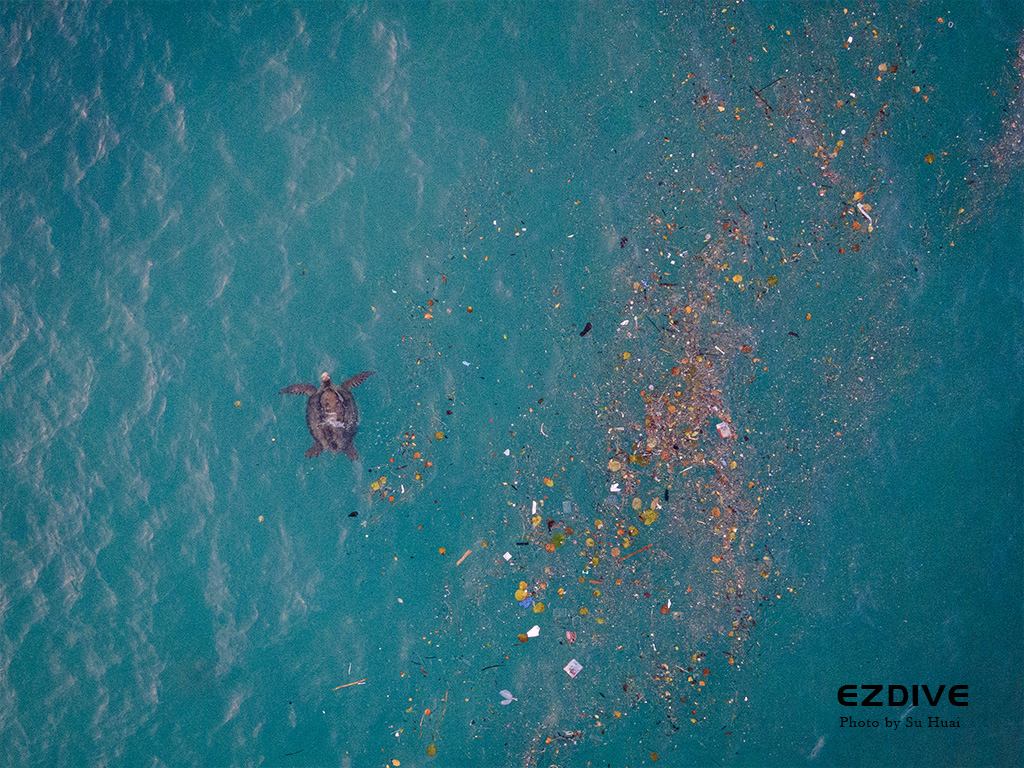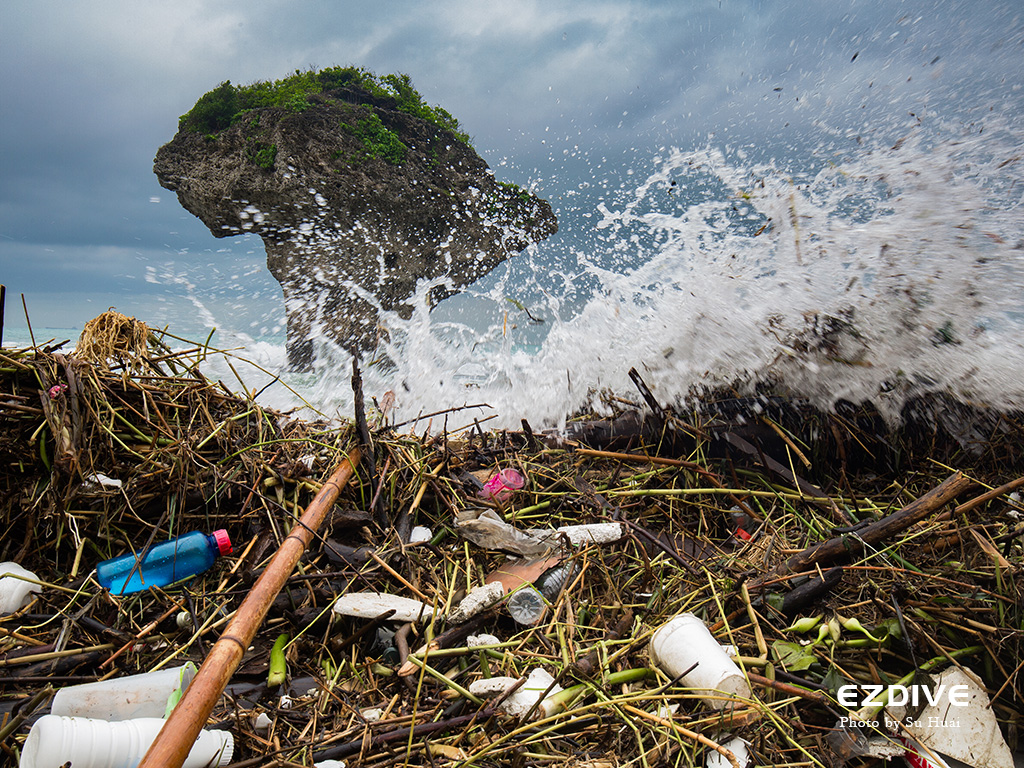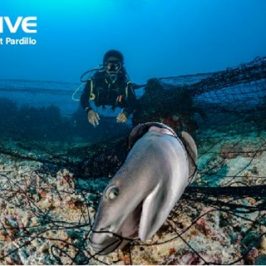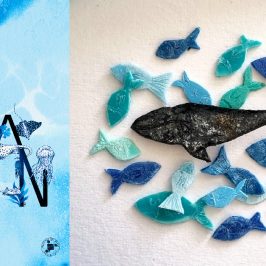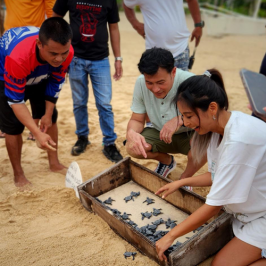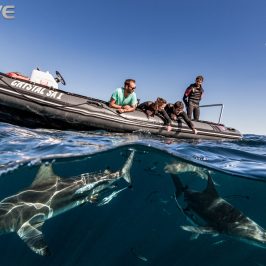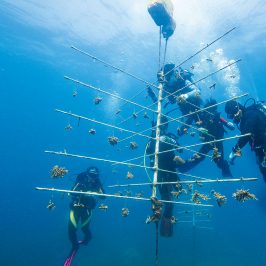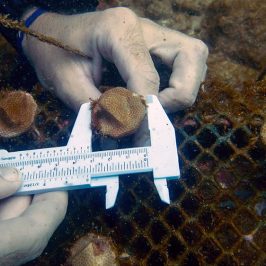“Which dive impresses you most?” Every time I am asked this question, I recall a special encounter with a green turtle.
Text & Photo | Su Huai
On a summer day in 2016, and as a resident on Little Liuqiu, Taiwan, I went diving with my camera to record sea turtles as usual. Not long after I got into water, I saw a green turtle resting on a soft coral. It was somewhat shy and, as I moved a bit closer, it turned around then went off swiftly. I noticed from behind that there was something strange stuck under its abdomen, but due to the distance between us, I couldn’t see clearly.
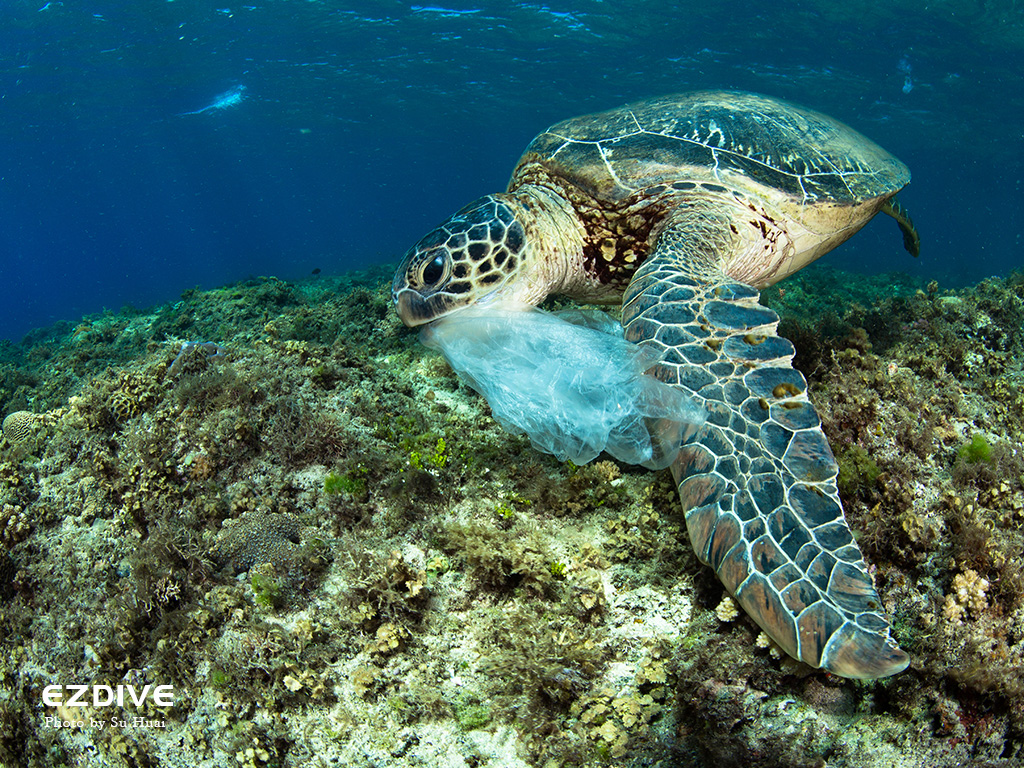
I thought it might be entangled in something so I decided to follow it, and tried to slow down so as not to scare it off. After about five minutes, the turtle finally stopped to rest. I pressed near and noticed that the strange thing under its abdomen was a plastic bag. I grabbed the plastic bag as the turtle moved on and it pulled out of the turtle’s anus unexpectedly.
I felt really shocked at the scene. I knew sea turtles could accidentally eat plastic bags, but I only had heard of it, never thinking it would happen in front of my eyes.
The encounter with this turtle that excreted plastics made me think a lot and changed my attitude toward the sea. At first, I only recorded beautiful things like colourful corals and cute sea turtles but now I can see clearly that, aside from beauty, there is distress in the sea. And the distress, in fact, is more worthy of being recorded and seen.
“How many sea turtles have eaten man-made objects by mistake?” To find out the answer, I developed a special hobby: collecting turtle faeces.
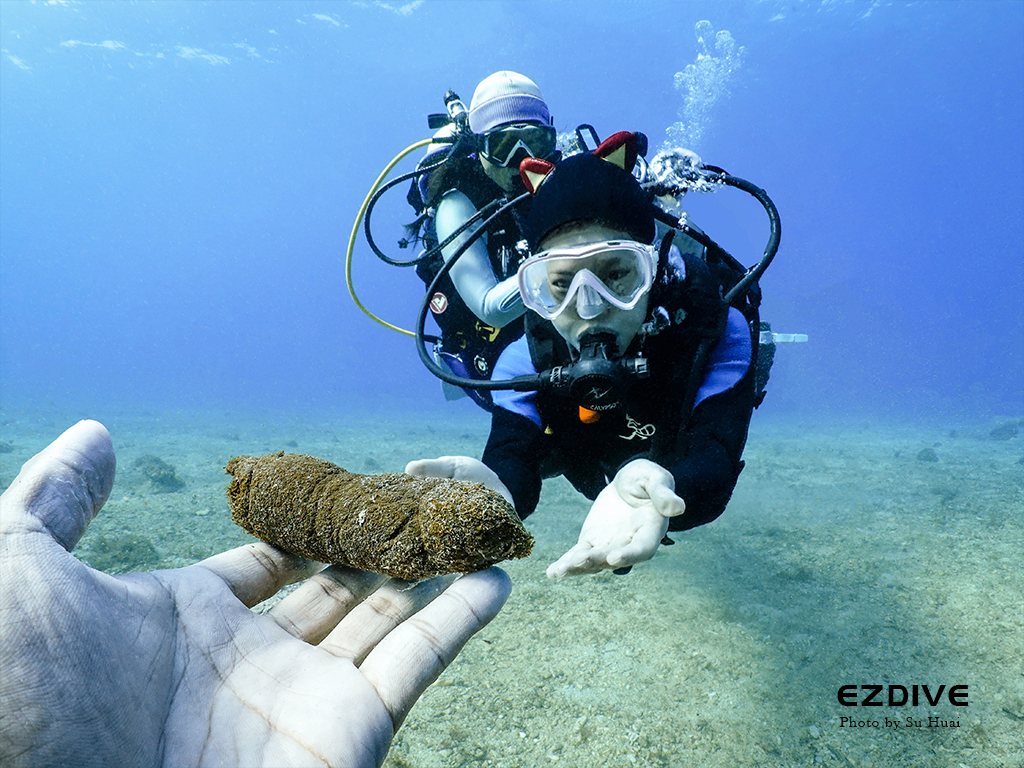
From then on, whenever I saw turtle faeces, I would go over and break it up, carefully observing whether it included man-made objects, then record them with images. Six years on, I have recorded nearly 200 turtle faeces, of which about 70% contained visible artefacts, with plastic fragments and fishing line being the most common.
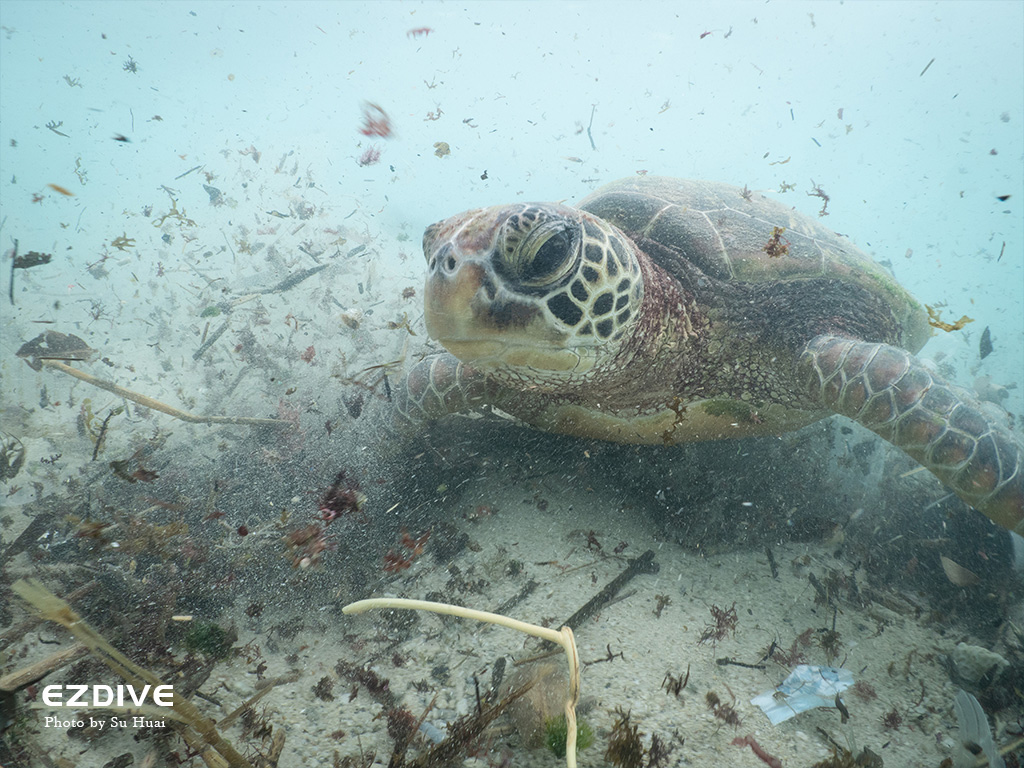
According to the 2019 Taiwan Sea Turtle Stranding Report of the Marine Conservation Department in the Ocean Affairs Council, of the 85 sea turtles that were stranded then died that year, 52 had man-made objects in their digestive tracts, accounting for 61%. According to National Museum of Marine Biology and Aquarium in Pingtung County, Taiwan, of the 24 sick sea turtles that were housed in the same year, 100% of them had man-made objects in their faeces, suggesting that marine debris has a general impact on sea turtles.
“By washing out what the turtles excrete, including detritus and faeces, you will find that there is human waste in their faces.” Referring to the record of researcher, Wen-Pu Tseng, from the National Museum of Marine Biology and Aquarium, the most waste in their faeces is plastic, covering hard and soft plastic, of which white plastic is the majority. Other waste includes rubber bands, fruit net bags and, even weirder, Barbie doll’s hair.
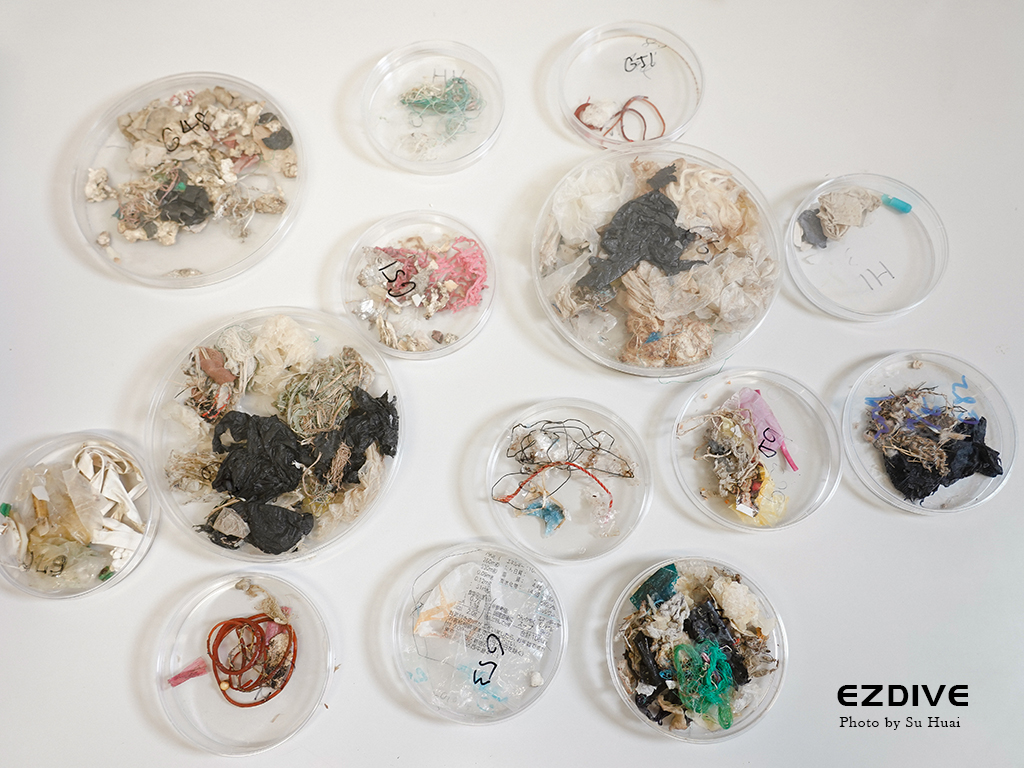
Sea turtles are very ancient creatures, their ancestors once coexisted with dinosaurs, so they have evolved for hundreds of millions of years. Recently, due to factors like over-exploitation, large-scale fishing activities, global warming, marine pollution and so on, sea turtle populations in various regions are under threat, or even endangered.
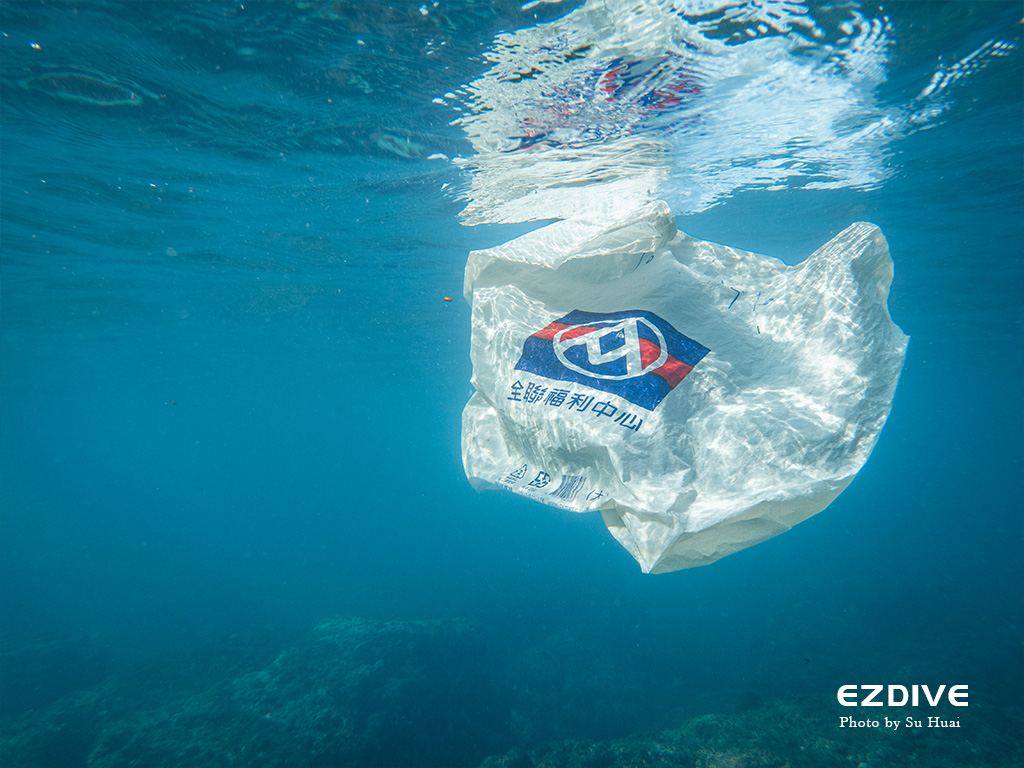
The ocean is closely related to our lives. In our daily life, every single action and deed can greatly affect sea turtles and other marine life.
